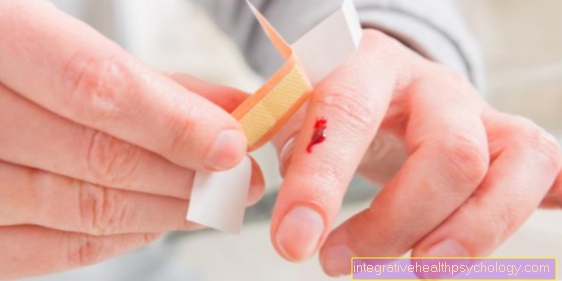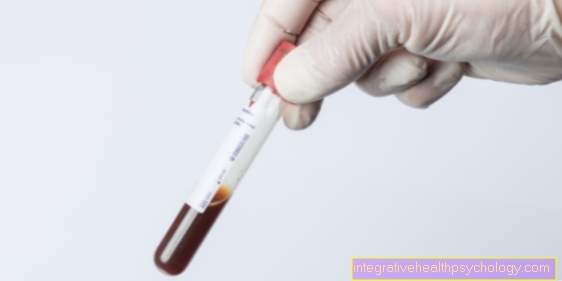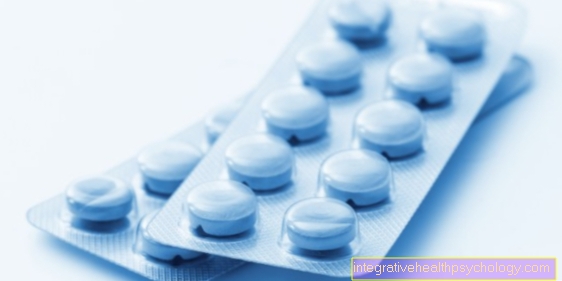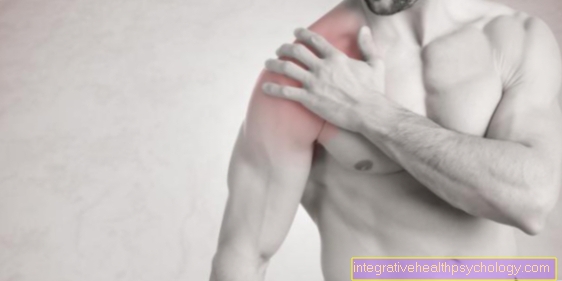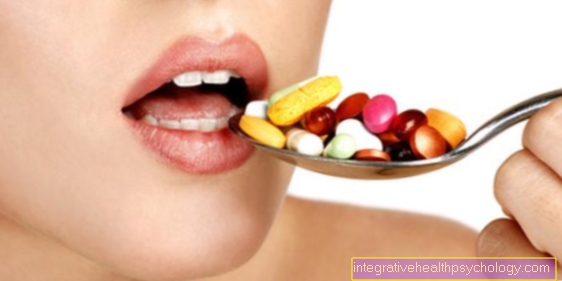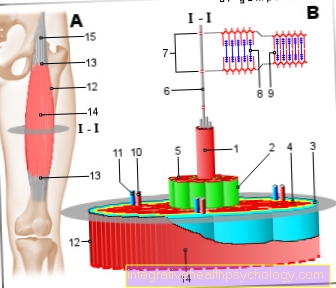Eye drops and eye ointments
General

Numerous drugs in the form of eye drops or eye ointments are used in ophthalmology. It should be noted that eye drops are absorbed more quickly and eye ointments often remain in the eye for much longer and thus cause the typical deterioration in vision (streak vision).
In addition to the cortisone and antibiotic eye drops, which are mainly used for bacterial infections and inflammations, the non-steroidal anti-inflammatory drugs and local anesthetics, which are mainly used for intraocular pressure examinations, are common drug groups.
In the treatment of glaucoma (glaucoma) numerous eye drops are used, the systematic counterpart of which is mainly used in cardiovascular therapy in patients.
Antibiotics
Antibiotics can be given in the form of eye drops or eye ointment.
Indications are:
- direct bacterial infections of the eye
- as prophylactic measures after operations (to prevent infection)
- after corneal injuries (to prevent infection)
The following active groups are used in antibiotics:
- Aminoglycosides (gentamycin, kanamycin, neomycin, tobramycin) -> act against staphylococci and enterobacteria
- Gyrase inhibitors (ciprofloxacin, ofloxacin) -> act against a.o. Chlamydia
- Polymycin B -> works against pseudomonads and other gram-negative rods
If severe eye infections occur, antibiotic therapy must be applied systemically. In this case, tablets are used that act on the entire body.
A special form of antibiotic eye drops are the antifungal eye drops. These are antifungal agents that are always used when the cause of an eye disease is seen to be a fungal infection, and this could possibly even be confirmed by smearing the eye.
Read more on the topic:
- Floxal
- Eye ointment with antibiotic
It would be the substance classes here:
- Beta blockers
- Prostaglandin derivatives
- alpha-2 agonists
- Carbonic anhydrase inhibitors
- Cholinergia
- Adrenergic drugs
should be mentioned, the effect of which leads either to an increase in the aqueous humor outflow or a reduction in aqueous humor production to normalization of internal pressure, which is gentle on the optic nerve.
Eye medication containing cortisone

Reasons to use this group of drugs are:
- when the immune system of the body and essentially in the area of the eye is to be shut down.
- in allergic reactions
Learn more about the topic: Eye drops for an allergy
The main diseases in which eye drops containing cortisone are used are allergic conjunctivitis and inflammation of the middle skin of the eye (Uveitis).
In the case of long therapy periods with medication containing cortisone, it must be noted that the side effect of the intraocular pressure can increase (induced glaucoma). Furthermore, even with long-term medication, the lens of the eye can become cloudy (cataract) come.
Read more on the topic: Eye ointment with cortisone
Eye drops to lower pressure
In addition to antibiotic and anti-inflammatory eye drops, medication is also regularly used in ophthalmology to help you reduce chronically increased intraocular pressure (glaucoma).
The lowering of the intraocular pressure can through various drugs can be achieved:
- Beta blockers (Betaxolol, Timolol, Carteolol, Pindolol) are usually used in internal medicine when at Heart disease or high blood pressure the heart rate should be reduced.
As side effect Beta blockers also show one Lowering the intraocular pressure, and for this reason beta-blocker eye drops are used in Glaucoma patients used. - Prostaglandin derivatives (Bimatoprost, Latanoprost, Travoprost, Unoprostone) increase aqueous humor outflowwhich also leads to a reduction in intraocular pressure.
- Alpha 2 agonists (Apraclonidin, Brimonidin, Clondin) reduce the production of aqueous humor and are therefore also used in glaucoma patients.
- Carbonic anhydrase inhibitors come as last glaucoma medication for use. These include brinzolamide, dorzolamide, which reduce aqueous humor production.
In addition to the above-mentioned drug groups that are used in ophthalmology, more frequently Medication in the form of eye drops applied that the Wet and moisturize the corneawhen it comes to Dry eye syndromes acts.
In contrast to the aforementioned drugs, the so-called Tear substitutes relative few side effects and can used generously become.
Effects

In most cases it will be Eye drops in the conjunctival sac dripped in and the Dosage of one drop per eye elected.
The patient should put their head back and look up while pulling the lower eyelid down. The eye drops then collect in the conjunctival sac and are used in the Conclude of the eye on the Surface of the eye distributed.
About the Conjunctiva and cornea will the Active ingredients added and develop the corresponding effect. The remaining stocks of the eye drops are over the so-called Schlemm Canal derived. In some cases this is referred to by the patient as bitter taste perceived (especially with glaucoma drugs).
Side effects
All eye drops also have some side effects that can be related to allergic reaction or reddened ones eyes restrict. In some cases, however, systemic, serious side effects can also occur, which then lead to the Drop the eye drops / ointments or that Change the drug should be considered.


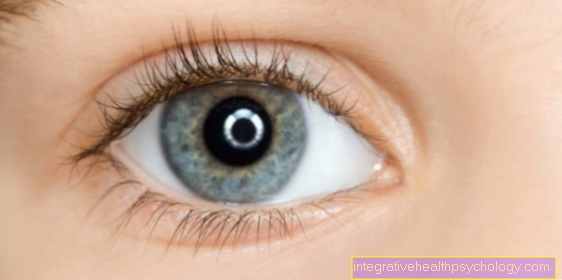



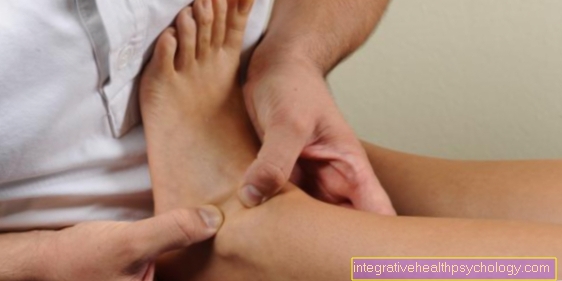
-de-quervain.jpg)
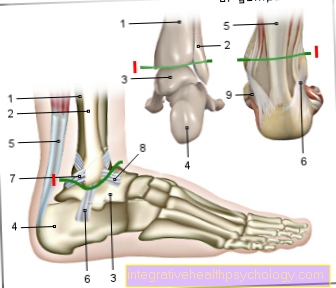

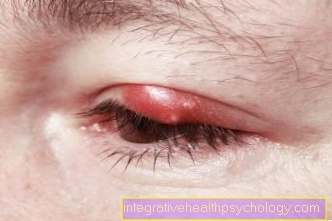

.jpg)


